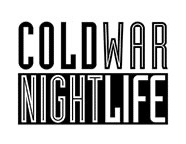Sound mirrors are acoustic devices that reflect sound to a focal point. Prior to the advent of radar, large versions were built to pick up the sound of incoming enemy planes along the British coastline. Operators would listen to the drone of the sea, captured and focused by the mirrors, and put out an alert if they detected changes introduced by the sound of aircraft engines. So why would the Swedish darktronica pioneers, Covenant, name a single after them?
According to the band’s Joakim Montelius, the inspiration came from an article on the devices while reflecting on the refugee crisis in the Mediterranean:
My reading coincided with the refugee situation in Europe. The fact that we all knew about the reasons for it since years, without doing anything to help, made me think of this pattern. How we, humans in general, do everything in our power to try and predict future threats. That ability to anticipate possible scenarios is of course key to our survival, from an evolutionary point of view.
 The track is lifted from Covenant’s new album, The Blinding Dark. It sits nestled among tracks of remarkable strength, pointing out the sounds of burning homes and broken souls. It is a unique statement from Covenant, and sits alongside Portion Control’s “Refugee” as a song about mass displacement that you can dance to. Perhaps, if we weren’t bombing their homes and arming the mercenaries who attack them, the peoples of the Middle East and North Africa wouldn’t need to move to colder countries – a point your DJ can make by spinning one of the excellent remixes that feature on the single release.
The track is lifted from Covenant’s new album, The Blinding Dark. It sits nestled among tracks of remarkable strength, pointing out the sounds of burning homes and broken souls. It is a unique statement from Covenant, and sits alongside Portion Control’s “Refugee” as a song about mass displacement that you can dance to. Perhaps, if we weren’t bombing their homes and arming the mercenaries who attack them, the peoples of the Middle East and North Africa wouldn’t need to move to colder countries – a point your DJ can make by spinning one of the excellent remixes that feature on the single release.
The other songs on The Blinding Dark are similarly bleak, even if they are less tied to the day’s headlines. It has been pointed out that Eskil Simonsson’s vocals in “Dies Irae” owe something to the style of Leonard Cohen, but the bard of Montreal rarely ventures into territory this dark. The title refers to the “day of wrath” in Christian mythology, and in the hands of Covenant it is also “a day of loss and mourning.” It will be the soundtrack to a thousand Goth funerals.
The filters work hard on “Cold Reading,” another dancefloor-oriented track infused with fizzing electronics. “I’m not the one to fear,” intones Simonsson over a trance-inducing pattern, but it sounds like he is. Stripped down and minimal, the electronics are sinister and tense, creating an atmosphere of darkness and dread transported from a Grimm tale.
Covenant’s experimental side comes out at several points on the album. The opening track, “Fulwell,” replicates the experience of listening to an acoustic mirror, in what might be the first industrial track featuring a seagull. There are two “Interludes”: the first tying together loops of machinery, pulses from modular kit and crushed vocals; the second sounding like a distant cousin of the sketches from New Order’s Power, Corruption and Lies. The peak of this thread, however, is found in a cover of Lee Hazlewood’s “Rider on a White Horse”: static, loops, drones and a duet combine to refract the imagery of the original, returning it to the Book of Revelations.
Theatrical, experimental and moody, The Blinding Dark is a compelling follow up to Leaving Babylon that captures the mood of 2016 to a T.
Photo credits: Chris Ruiz.

